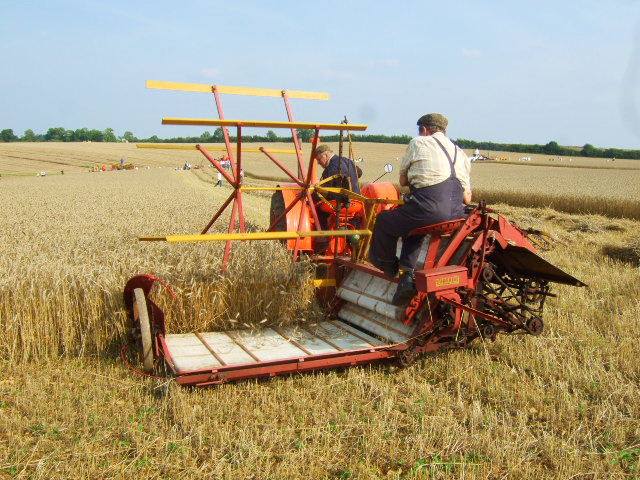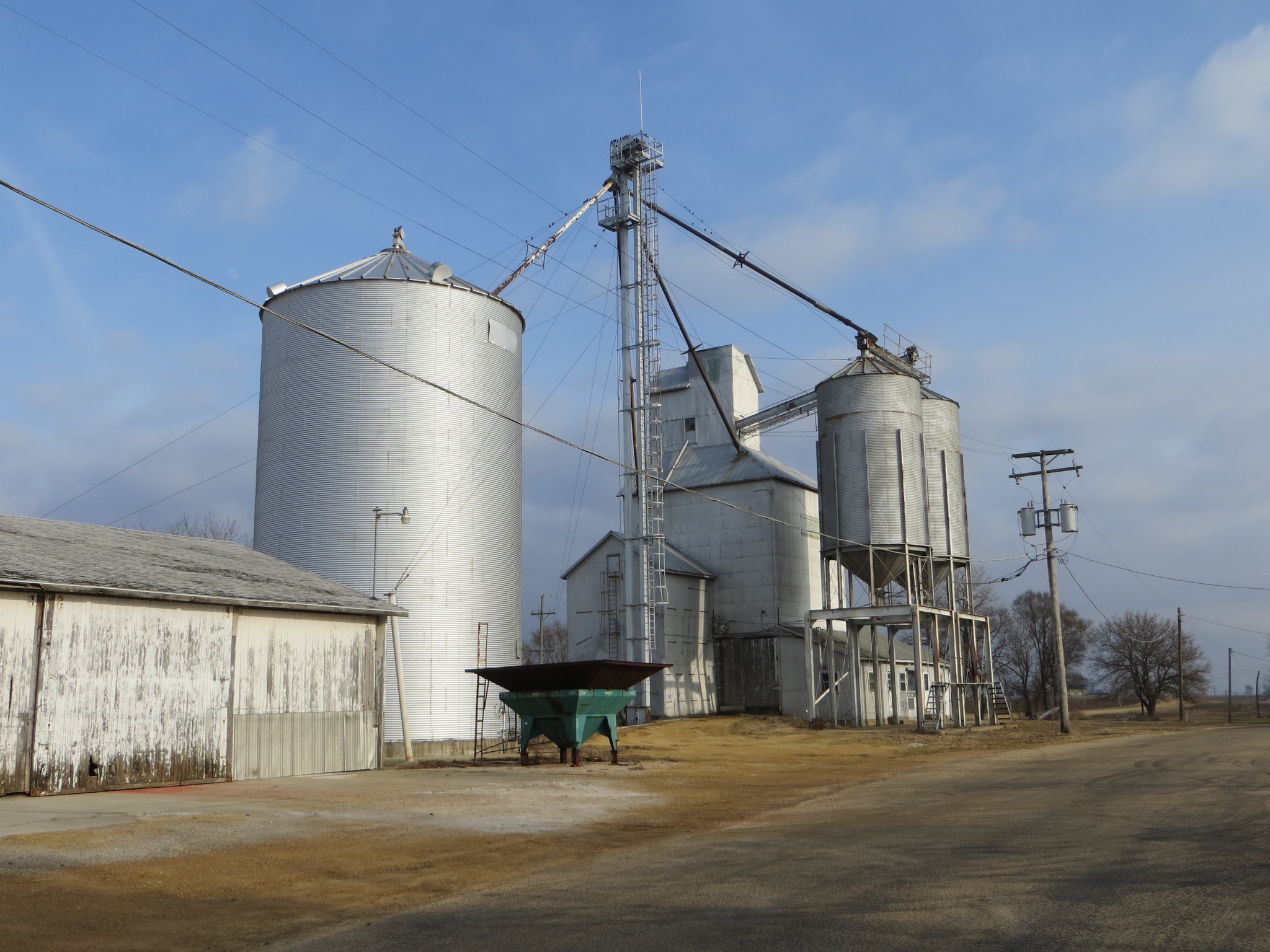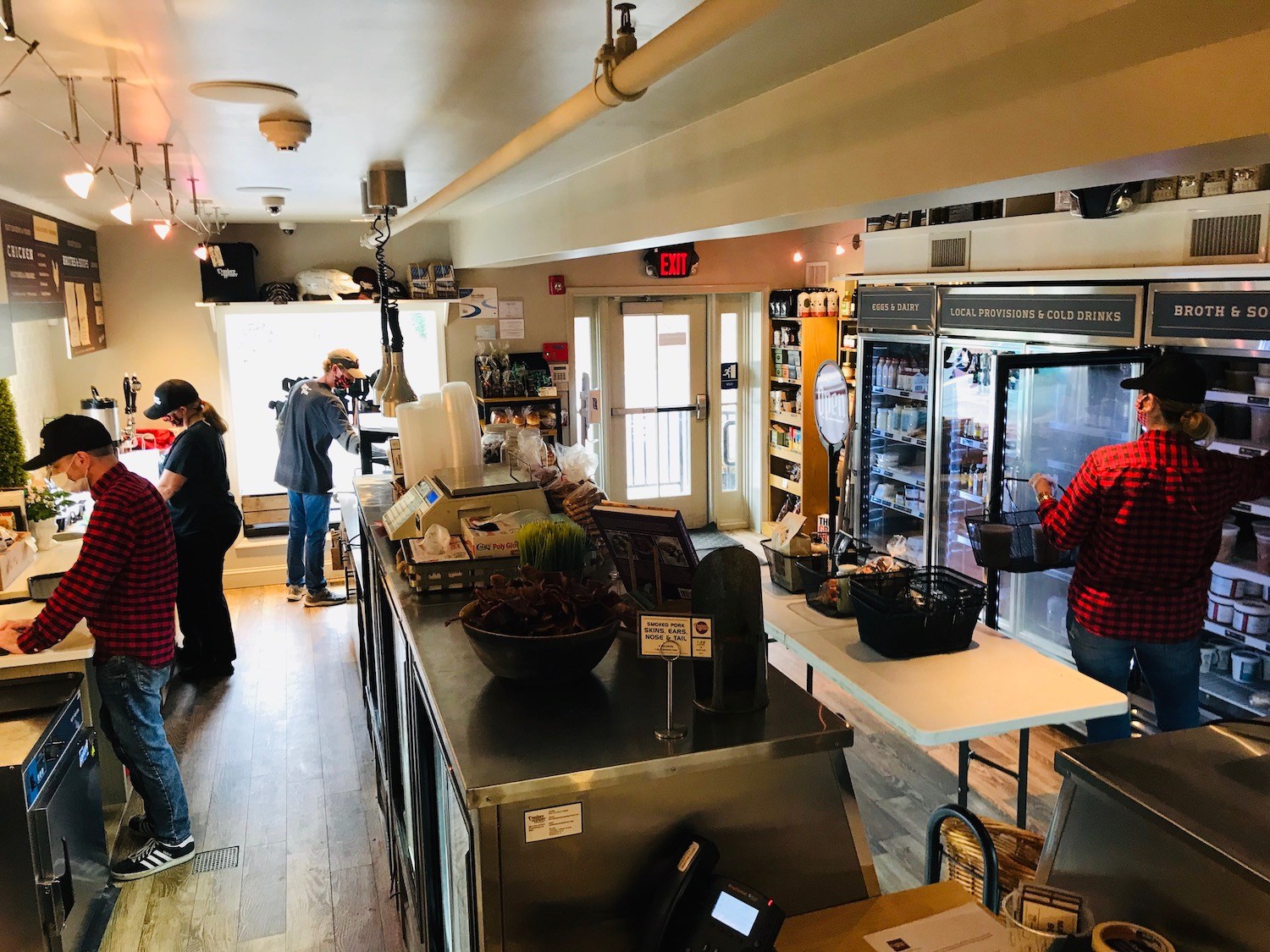
Flickr/Marco Verch
Grocery stories sell only a small portion of the flour that’s available. But getting commercial supply into retail markets has been a challenge—one that’s revealed stark differences between commodity mills and regional grain economies.
As the Covid-19 pandemic stretches on, Americans are baking at home more than they have in the past decade. But this mass return to a comforting, hands-on habit has resulted in a spotty supply of baking staples like flour and yeast at grocery stores and supermarkets.
“Commodity supply has been completely inconsistent and sporadic,” said Vince Finazzo, owner of Riverwards Produce in Philadelphia. He hasn’t been able to source five-pound bags of King Arthur flour since March 18 or so. “We can get 50-pound bags, because restaurants aren’t buying them any more. If we had the labor, we would break it down and pack it ourselves, but things are tight.”
Right now, Finazzo is stocking bags of Pillsbury bread flour from Restaurant Depot, “just to get any type of flour on the shelf.” That’s in addition to two-pound bags of local flour sourced from Castle Valley Mill in nearby Doylestown and Small Valley Milling north of Harrisburg.
Finazzo isn’t alone in struggling to keep retail bags of mainstream all-purpose in stock. Images of empty shelves in baking aisles at independent retailers and supermarket chains alike have peppered social media feeds. They’re interspersed with more than 64,000 Instagram posts with the hashtag #quarantinebaking, showing crumb shots of crusty sourdough loaves, pastel-frosted cupcakes, and chocolate chip cookies as homebound consumers channel pandemic-induced stress, boredom, or both into batters and doughs.
Sales figures back this up: For the week ending March 21, Nielsen data show that yeast purchases skyrocketed 647 percent (a shortage that may have contributed to a drastic increase in Google searches for “sourdough” the following week). For the week ending March 28, retail flour sales were up 154 percent over the same week in 2019, with baking mixes up 99 percent for the same period, according to data provided by the Grain Foods Foundation, an industry advocacy group.
“Whether it’s flour, yeast, or the finished product disappearing from shelves, it’s troubling,” said Christine Cochran, the foundation’s executive director. “My own mother texted me and asked me to find her flour.”
But Cochran cautions that consumers are seeing empty store shelves because of a sudden change in their own buying habits, not a shortage of grain or flour at the nation’s mills. Growers are producing enough grain, and millers are milling it. Instead, the trouble stems from a shift in demand: In general, bulk wholesale channels are suddenly ordering less flour, while grocery stores are suddenly needing more. As a result, industrial-scale mills across the country are scrambling to rejigger their operations and convert to selling more small retail-sized bags.
“Once we get trucking and grocery store labor worked out, we’re going to see these shelves fill back up again.”
“The question becomes, how does the supply chain react to that?” Cochran said.
In this case, as quickly as they can—though, considering the complex supply chains that make up the U.S. commodity flour industry, that will not necessarily happen overnight.
“Millers who produce five- and 10-pound bags, it’s not that they don’t have flour,” said Justin Gilpin, CEO of Kansas Wheat, a partnership between the Kansas Wheat Commission, an advocacy group, and the Kansas Association of Wheat Growers based in Manhattan, Kansas. “They’re ramping up capacity and building up inventory…Once we get trucking and grocery store [labor] worked out, we’re going to see these shelves fill back up again.”
The stark image of those empty supermarket shelves, then, tell a misleading story: To the U.S. commodity flour industry, the Covid-19 home-baking boom has so far been more blip than disruption. That’s because the two-, five-, and 10-pound bags of flour and boxed baking mixes sold to consumers through supermarkets and grocery stores—what Gilpin refers to as “family products”—make up only a tiny sliver of the overall flour market. Just four percent of annual U.S. flour production is sold to home bakers, versus 96 percent to commercial customers, according to data from the North American Millers Association.
“Family products are going strong, but bread processing may be falling back a bit after a peak in consumer demand.”
Timing also exacerbated the industry’s response to the pandemic-related spike in demand: The run on flour happened in the middle of its slow season. In a normal year, the biggest sales season for family products begins in November, peaking with the winter holidays. When demand shot up in mid-March, mills that may have been operating five days a week extended production to seven days, offered workers overtime, and purchased more grain to catch up.
The shift bucks a larger trend, too. Before the pandemic, Cochran said, the industry had seen seven to 10 years of steady decline—not only in sales of retail-packed flour but in per-capita consumption of all grains, with in-home use at record lows. Bread sales had been following the same trend. It takes time to turn that ship around.
After a frenetic three weeks, “we’re hearing that mills are building their inventory back up,” Gilpin said. “Family products are going strong, but bread processing may be falling back a bit after a peak in consumer demand.” The basis price for wheat—the difference in the price per bushel paid in local markets versus the futures price—also spiked in Kansas mills around March 15 as facilities sought additional supply from growers. In the last week of March, the basis price began to drop, another indicator that U.S. flour mills are more comfortable with their pipeline.
“Mills are absolutely buried…I have people screaming at me wanting more and more and more flour, and I just can’t give it to them.”
But the commodity system is only one part of the story. For the country’s small and midsize mills—part of regional grain supply chains that have been rebuilt by groups of growers, processors, advocates, artisan bakers, and chefs over the past five to 15 years—the country’s rediscovered interest in home baking and the collapse of the hospitality industry have offered a mix of opportunity and crisis.
Shepherd’s Grain sells farm-identified flours to retailers in the Pacific Northwest, purchasing wheat grown with no-till practices from 36 supplier farms in Washington, Oregon, and Idaho. But because the company’s product is milled at an Archer Daniels Midland facility in Spokane, CEO Mark Swenson said he’s looking at a four- to six-week lead time to supply retail-packed orders. Because ADM is struggling with the same sudden high demand, its own production gets priority.
“Mills are absolutely buried,” Swenson said. “I have people screaming at me wanting more and more and more flour, and I just can’t give it to them.”
“We immediately flipped the switch—not by our own choice, but because our online orders went through the roof.”
In eastern Pennsylvania, the still-nascent local grains movement has gained momentum thanks to relationships between processors like Castle Valley and Small Valley and demand from chefs and bakers working in the Philadelphia region’s vibrant dining scene. When restaurants in and around the city shut down in mid-March, producers also had to scramble to shift production—but they’ve had to do it without the commodity pricing, large workforce, or operational redundancies of the conventional grain economy.
When the hospitality industry in Philly went dark, Castle Valley owners Fran and Mark Fischer lost 95 percent of their business overnight. But they rapidly pivoted from restaurant wholesale towards consumer-oriented e-commerce. “We immediately flipped the switch—not by our own choice, but because our online orders went through the roof,” Fran said.
The Fischers had to lay off their staff and are now working 12-hour days along with their daughter to pack and ship retail bags to grain-curious customers across the country. “Before, a distributor would order 500 pounds of hard whole wheat. Now it’s 10 pounds of wheat flour, a bag of rye berries, three pastas, and a popcorn,” she said. “It’s completely different, but we have adapted. We’re grateful that we’re still in business.”
“Local product is always a little more expensive, but the quality is outstanding, and scarcity has people more willing to try it.”
At Small Valley, miller and organic spelt farmer Eric Steigman has seen a similar shift from stacking pallets of flour for foodservice to filling retail bags—some of which will go to Riverwards, where Finazzo has decided to add more varieties from the mill to his shelves.
“Local product is always a little more expensive, but the quality is outstanding, and scarcity has people more willing to try it,” Finazzo said. “They’re telling me they’re baking the best bread or pizza crust or chocolate chip cookies they’ve ever made.”
The Fischers, the Steigmans, and Finazzo are part of the Pennsylvania Grains Coalition, a consortium of growers, millers, maltsters, distillers, retailers, chefs, and bakers working to strengthen the regional grains economy. Though the group had its first meeting in January, it’s really a formalization of relationships that have been built and strengthened over the past decade or so. The group held its first-annual Grain Train, a consumer-facing educational expo accompanying the industry-focused Philadelphia Grain and Malt Symposium , on March 1—just before the virus began to wreak widespread havoc in the Mid-Atlantic.
The pandemic is forcing regional grain supply chains to lean heavily on the personal connections and close relationships on which they’ve built a movement.
Through his involvement with the group, Finazzo was able to connect with Steigman when broadline distributors couldn’t meet his needs for specialty flour. And Scott Morgan of Morganics Family Farm, who grows 20 acres of organic oats and wheat in Central New Jersey, used his introduction to Finazzo at a Pennsylvania Grains Coalition event to get his oatmeal on Riverwards’ shelves.
“Having been brought together in the same room for a meal and conversation, I was more comfortable reaching out to Vince,” said Morgan. “I’m probably not the best marketer, but that opened the door for me to feel comfortable cold-calling him, saying ‘We met, it’s a weird time, is there space for just a little bit?’”
The pandemic is forcing regional grain supply chains to lean heavily on the personal connections and close relationships on which they’ve built a movement. But it’s also revealing the need for greater volume of production and better transportation networks to keep supply consistent as demand slowly—or, in the case of the past month, suddenly—grows, said Katherine Rapin, the coalition’s coordinator.
“With this surge in demand, where do we stand with what we can actually provide people?”
“We have this perfect opportunity to get into local markets because they’re running out and looking for other sources, so we can step in,” she said. “But ultimately it’s also a test of our supply. With this surge in demand, where do we stand with what we can actually provide people?”
When all works well, the disrupted status quo can be a boon to regional grain economies. GrowNYC, an environmental nonprofit that operates farmers’ markets in New York City, for instance, has seen a sudden surge in sales. In all of 2019, GrowNYC sold about 90,000 pounds of organically grown whole grains, flours, and beans, according to June Russell, who directs the organization’s local grains program. Just three months into 2020, Russell said, more than 38,000 pounds have been sold—putting the program on track for a solid 50-percent increase over the previous year. Still, GrowNYC might be better prepared than most to take advantage of a sudden change in circumstances: It’s helped to connect local farmers and millers since 2004 and has benefited from years of investing in educational programming and customer outreach.
For Morgan, the pandemic has shown him that the region’s grain shed is a bit more robust than he expected—but still frustratingly disjointed. When a flood of customer inquiries came through the Morganics website a few weeks ago, Morgan was already low on the 10,000 pounds of oats he’d harvested last year. He went on the hunt for more organic oats, reaching out as far as Ohio and Indiana, but couldn’t find a crop that met his specifications for quality and growing practices. Then he realized that he hadn’t called the Fischers, who’d had a bumper crop of oats under contract from a local grower last year.
“Mark knew a guy with the oats I needed and helped us connect,” Morgan said. “In some ways, it feels like almost the wrong time to start something [like the Pennsylvania Grains Coalition] at the head of all of this. But in reality, it was the perfect time.”








